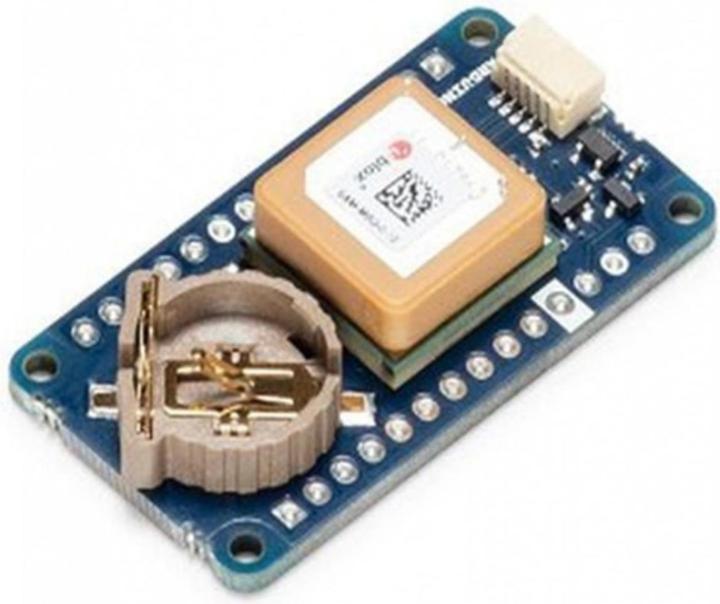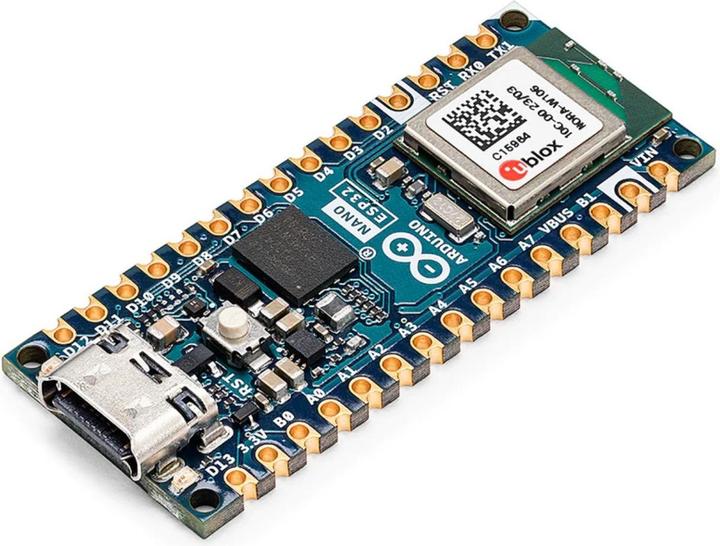
Best selling Development board accessories from Arduino
On this page you'll find a ranking of the best Arduino products in this category. To give you a quick overview, we've already ranked the most important information about the products for you.
1. Arduino Nano ESP32 without headers
Experience the perfect blend of accessibility, support, and performance with the Arduino Nano ESP32. Here, the trusted Arduino brand meets the robust capabilities of the ESP32-S3, all packaged in the practical and compact form factor of the Nano family. The Arduino Nano ESP32 comes in the familiar Nano form factor with a USB-C connector and offers support for Micropython and Arduino. It introduces a new architecture to the Arduino family, backed by Arduino's support, documentation, and community. Additionally, it provides a plug-and-play debugging experience with the Arduino IDE 2.

2. Arduino ABX00063 Giga R1 Wifi
ABX00063 Arduino GIGA R1 WiFi brings the power of the STM32H7 to the Mega form factor and is the first Mega board with integrated Wi-Fi and Bluetooth connectivity. The board offers 76 digital I/O pins (12 with PWM capability), 14 analog inputs, and 2 analog outputs (DAC), all easily accessible via pin headers. The STM32 microprocessor with Dual-Core Cortex M7 and Cortex M4, along with onboard memory and an audio jack, enables machine learning and signal processing at the edge of the system. Target areas include 3D printing, signal processing, maker projects, and robotics. It features a camera with a 20-pin Arducam camera connector, a display, and an audio jack.
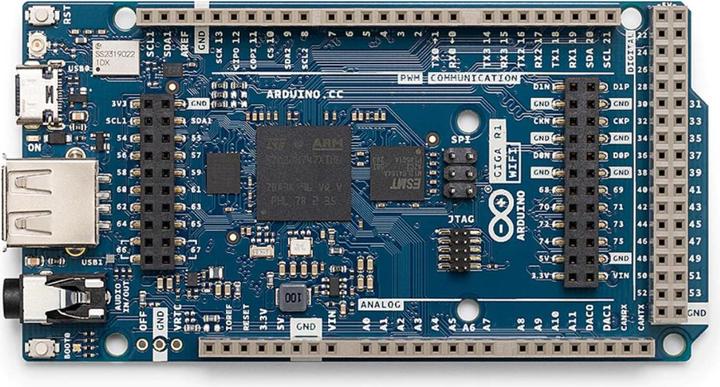
3. Arduino GIGA Display Shield Touchscreen Monitor 10.1cm (3.97 inch) 800 x 480 Pixel
The GIGA Display Shield is a versatile touchscreen development board accessory specifically designed for integration into projects with the GIGA R1 WIFI Board. Featuring a 3.97-inch display with a resolution of 800 x 480 pixels, it enables the creation of vibrant graphical user interfaces. This shield offers a seamless connection via the new pin header interface and is ideal for applications that require interactive control, such as weather stations or smart home systems.
Highlights:
- Integrated digital microphone for voice control projects
- 6-axis IMU for motion control and detection
- Arducam connector for camera integration.

Arduino GIGA Display Shield Touchscreen Monitor 10.1cm (3.97 inch) 800 x 480 Pixel
4. Arduino Ethernet Shield 2
Simply connect this module to your Arduino board, link it to your network using an RJ45 cable (not included), and follow a few simple steps to control your world over the Internet. As always with Arduino, every element of the platform – hardware, software, and documentation – is freely available and open-source. This allows you to learn exactly how it works and use its design as a starting point for your own circuits.
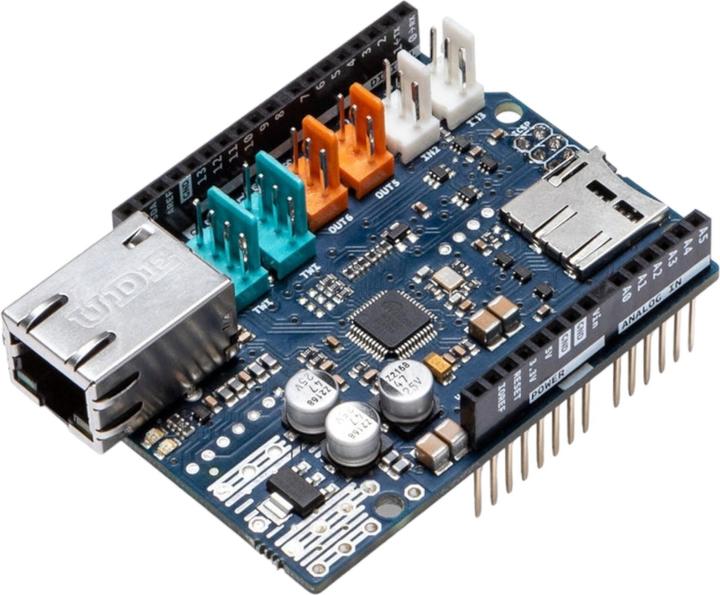
5. Arduino Education Replacements Pack
Make sure you have an Arduino Replacements Pack on hand! While the Arduino Education Kits come equipped with everything you need, we know that sometimes parts can get misplaced in the excitement of hands-on work in the classroom. The Arduino Replacements Pack includes all the common electronic components that two students might need to complete their projects. This package contains replacement parts for the Arduino Starter Kit Classroom Pack, Arduino Student Kit, Arduino Education Starter Kit, Arduino CTC 101, and Arduino CTC GO! - Core Module. The pack includes a total of 183 replacement parts, including a breadboard, jumper wires, LEDs, resistors, transistors, sensors, and more. Please note that for larger products like CTC GO!, you may need more than one replacement pack.
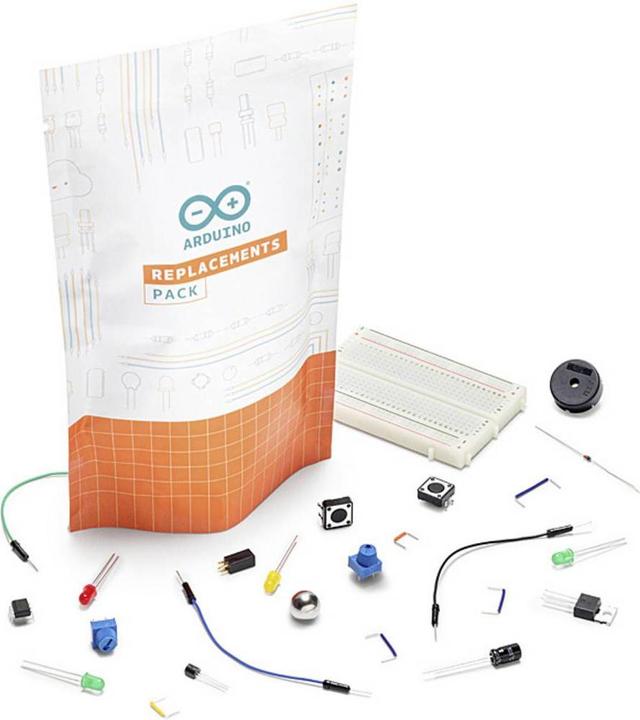
6. Arduino Motor Shield Rev3
The Arduino Motor Shield is based on the L298, a bridge driver for controlling inductive loads such as relays, magnets, DC motors, and stepper motors. It enables the control of two DC motors, with the speed and direction of rotation being independently adjustable for both motors. It is also possible to measure the power consumption of each individual motor. The shield is compatible with TinkerKit, which means that projects can be quickly and easily created by connecting a TinkerKit module.
The shield features two independent channels, A and B. Each channel requires 4 connections on the Arduino board to select the direction of rotation, change the speed, quickly brake, or perform current measurements. In total, the shield uses 8 pins. The channels allow for the independent control of two DC motors or one bipolar stepper motor. The shield can deliver 2 A per channel or a maximum of 4 A.
The shield uses the standard 1.0 pin layout, which is equipped with 4 additional pins: 2 pins are located near the AREF pin and are used for TWI communication. The other two pins are located near the reset pin. The IOREF pin allows shields to utilize the voltage of the Arduino board. The second pin is not connected and has been added for future enhancements.
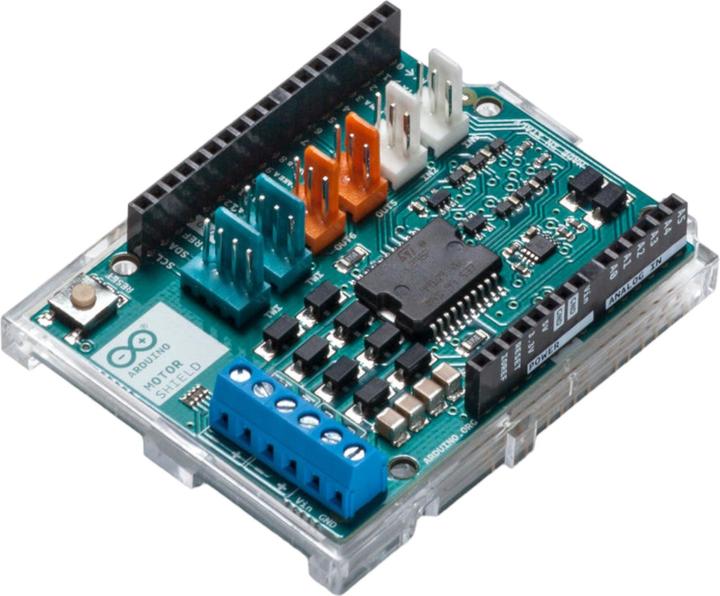
7. Arduino AKX00068 - Alvik (6 pieces only for EDU partners)
With Arduino Alvik, innovators, students, and educators at any level can enter the world of programming and robotics and progress with each step.
Alvik simplifies programming and complex robot projects, enabling users of all levels to dive into the exciting world of programming and robotics. It is also an interdisciplinary tool that bridges the gap between education and the future of robotics with free CSTA and NGSS-compliant courses. This innovative and versatile robot makes learning and designing more accessible and enjoyable than ever before.
Key benefits include:
- Program in no time: Powered by the versatile Nano ESP32, Alvik simplifies the learning curve in robotics with its comprehensive programming suite, which includes block-based programming for elementary students, MicroPython, and Arduino language for K12 and learners of various levels ready to explore the world of programming and robotics.
- Unleash the robot's potential with multiple integrated sensors: Alvik's Time of Flight, RGB color, and line-following array sensors, along with the 6-axis gyroscope and accelerometer, enable users to tackle a range of innovative, real-world projects. From a robot that avoids obstacles to an intelligent warehouse automation robot—the possibilities are endless!
- Customize your experience by expanding Alvik's capabilities: Alvik is equipped with LEGO Technic connectors, allowing users to personalize the robot and enhance its abilities. It also features M3 screw connectors for custom 3D or laser cutter designs.
- Expand Alvik's flexibility for dynamic movements: The servo, I2C Grove, and I2C Qwiic connectors allow users to...
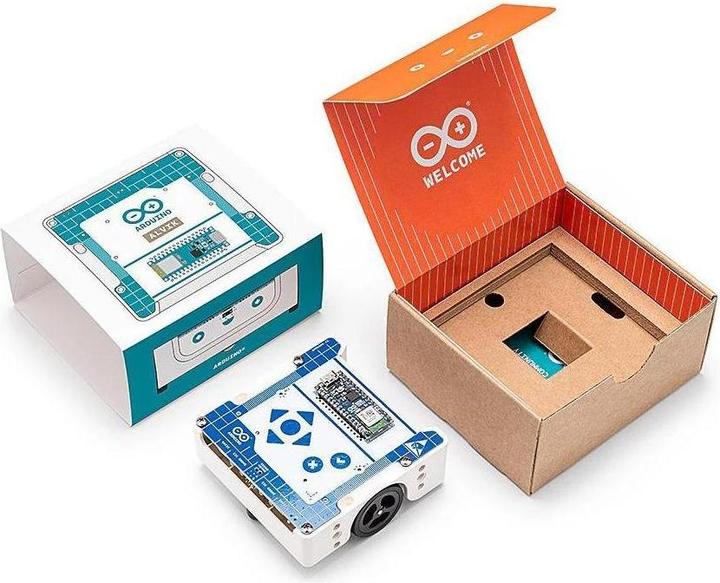
8. Arduino Shield MKR RGB
Write messages and add graphics with this shield. A ready-to-use library with examples and methods is available to easily write static and scrollable text. You can use this shield to show values from your board and it is controllable from the Arduino IoT cloud. There is no need for solder or special adapters; just plug the RGB matrix shield on top of your favorite MKR board and you are ready to go! The mounted LEDs are very dense and bright, with full RGB colors!.
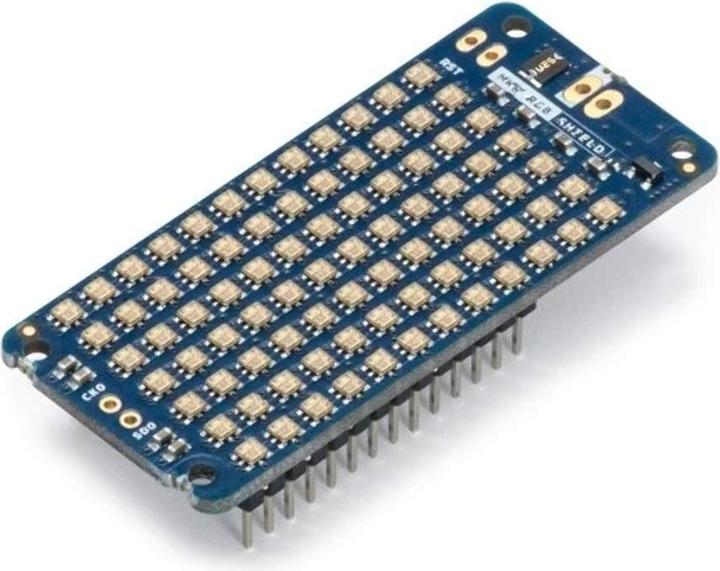
9. Arduino AFX00005 Extension module
Expand the real-time control, monitoring, and predictive maintenance of your Arduino Opta with the Arduino Pro Opta Digital Expansions. Power up your Opta Digital Expansion and multiply the capabilities of your system with 16 programmable inputs for connecting your digital sensors and 8 additional relays for controlling your machines. Arduino Pro Opta Ext D1608E: 16 programmable voltage inputs, 8 electromechanical relays 250 V/AC, 6A.
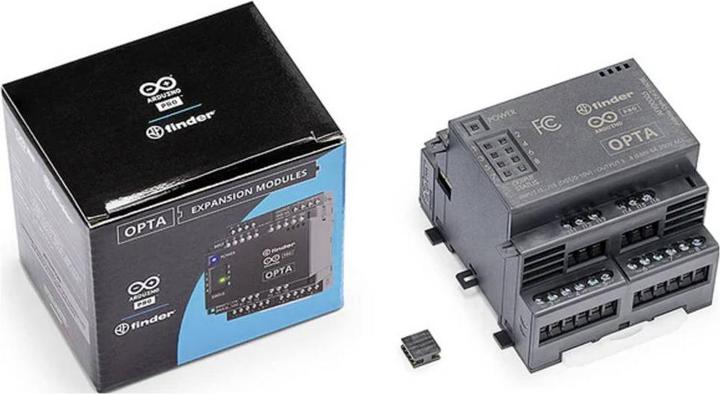
10. Arduino Shield MKR GPS
If you are experimenting with monitoring fleets, high-altitude scientific experiments, or any kind of project requiring localization of devices, the MKR GPS Shield will offer you the functionality you need, and it is plug and play!
The MKR GPS Shield is based on the u-blox SAM-M8Q GNSS (Global Navigation Satellite System) module. It is meant to be used on top of boards in the MKR format, but thanks to its Eslov connector, it is also possible to hook it up to any board with that kind of connector available using a cable.
This module is designed to operate with different positioning services concurrently. It receives and processes the signals from GPS, GLONASS, and Galileo. It interfaces with Arduino boards either through a serial interface when used with headers and placed on top of a MKR board, or through an I2C interface and a dedicated ESLOV cable supplied as a bundle.
